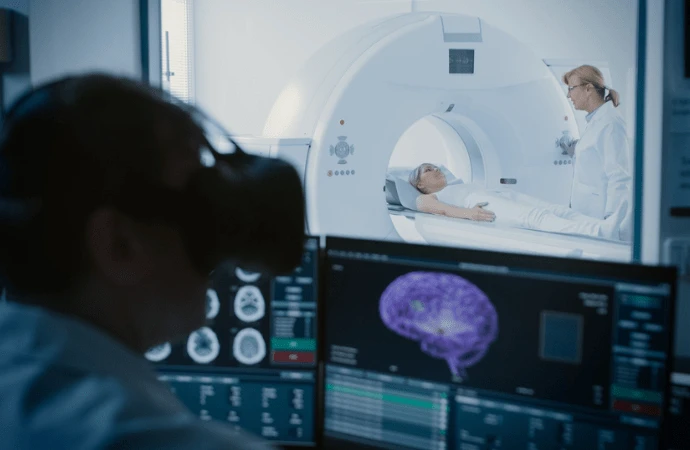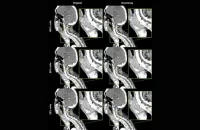Researchers recently explored the prevalence and persistence of post-COVID conditions, which can include lingering symptoms or new ones. To evaluate these conditions, patients often undergo chest CT scans, which can pose radiation risks. However, advancements in CT technology have led to ultra-low-dose CT (ULDCT), potentially reducing radiation exposure. This study published in European Radiology aims to compare ULDCT with standard-of-care-dose CT (SDCT) in terms of diagnostic accuracy and reader agreement specifically for post-COVID conditions, an area that hasn't been extensively studied despite its significance for millions of patients worldwide.
Exploring Post-COVID Conditions and Imaging Risks
This study enrolled 153 consecutive patients with post-COVID-19 conditions who underwent both standard-of-care-dose CT (SDCT) and ultra-low-dose CT (ULDCT) scans of the chest between May 2020 and January 2021. The ULDCT scans utilised specific parameters to minimise radiation exposure. Four radiologists independently evaluated all CT scans for lung changes consistent with post-COVID conditions. Inclusion criteria encompassed clinical indication for chest CT follow-up after COVID-19, confirmed COVID-19 history, persistence of symptoms for over four weeks, and age above 18, with informed consent. No exclusion criteria were applied due to the low radiation dose of ULDCT and the clinical necessity of the CT examination.

Image Credit: European Radiology
Diagnostic Accuracy and Reader Agreement Between ULDCT and SDCT
The results showed excellent intra-reader agreement between ULDCT and SDCT for detecting post-COVID lung abnormalities, with an overall agreement of 93.3%. Specific patterns of abnormalities, such as ground-glass opacities (GGO), consolidations, reticulations, and bronchial enlargements, also demonstrated high agreement between the two modalities. ULDCT exhibited good sensitivity (87.2%) and high specificity (94.9%) for detecting post-COVID lung abnormalities, although sensitivity varied for different imaging patterns. Notably, inter-reader agreement for certain abnormalities, such as reticulations and bronchial enlargement, was slightly lower for ULDCT compared to SDCT, possibly due to the lower radiation dose of ULDCT. However, intra-reader agreement remained excellent for both modalities. The study also highlighted previous research on ULDCT in acute COVID-19 cases, demonstrating its efficacy and comparable diagnostic quality to SDCT. However, this study uniquely focused on post-COVID patients, extending the evidence base for ULDCT's applicability in this population.
Despite its strengths, the study had limitations, including its single-center design, lack of histopathological correlation, and inclusion of unselected patients with post-COVID conditions, potentially skewing the sample toward milder cases. Nevertheless, the findings suggest that ULDCT could serve as a radiation-saving alternative for post-COVID patients requiring follow-up imaging, offering high diagnostic accuracy with substantially reduced radiation exposure compared to SDCT.
Source: European Radiology
Title Image Credit: iStock







